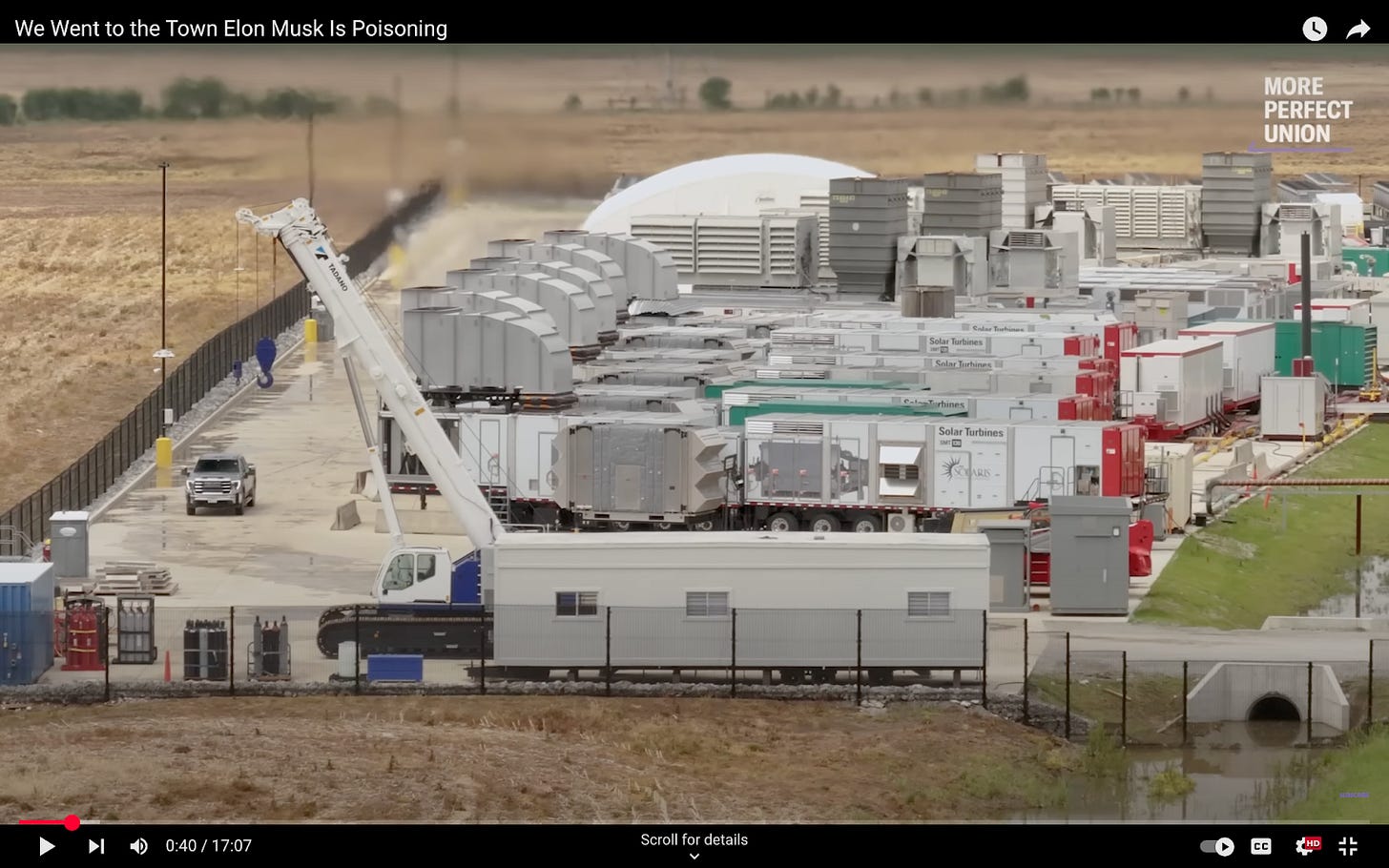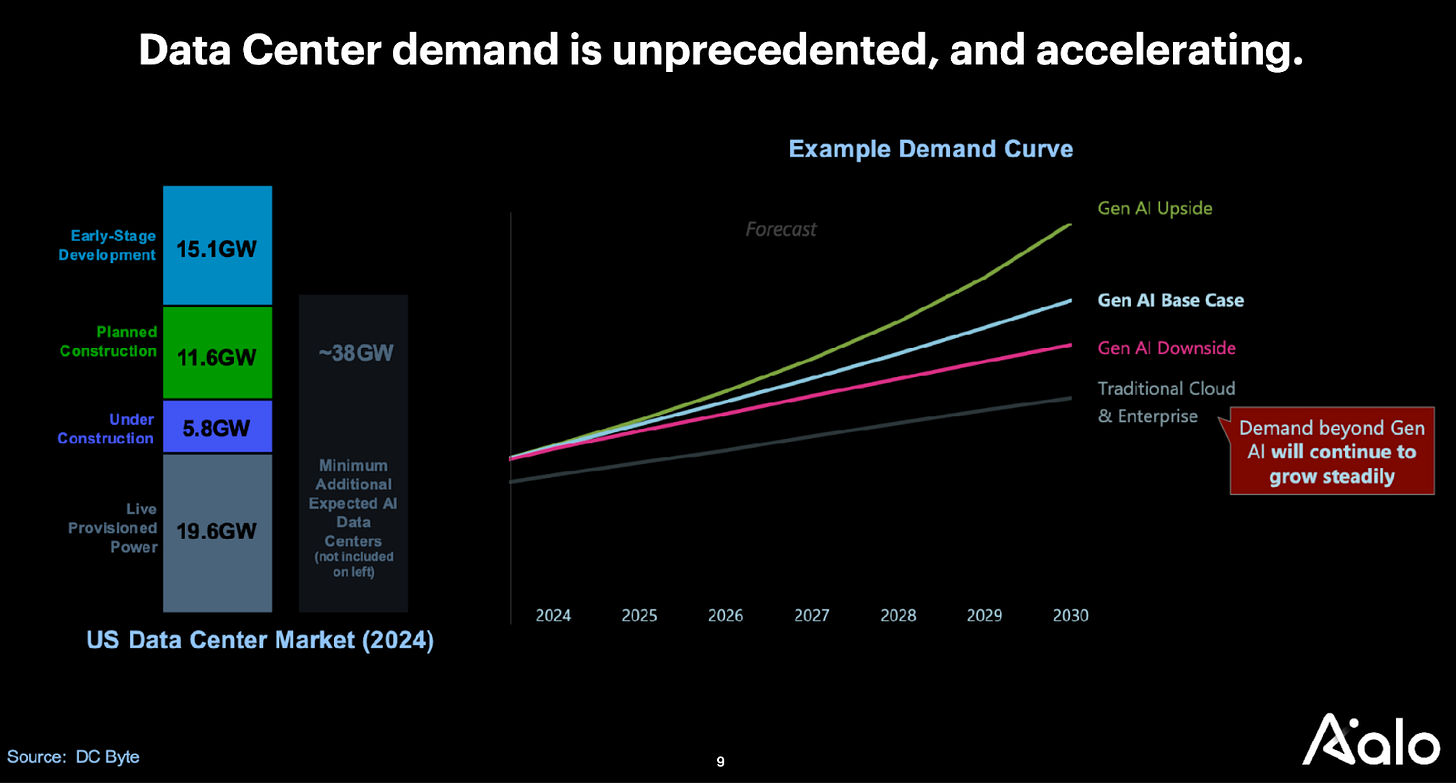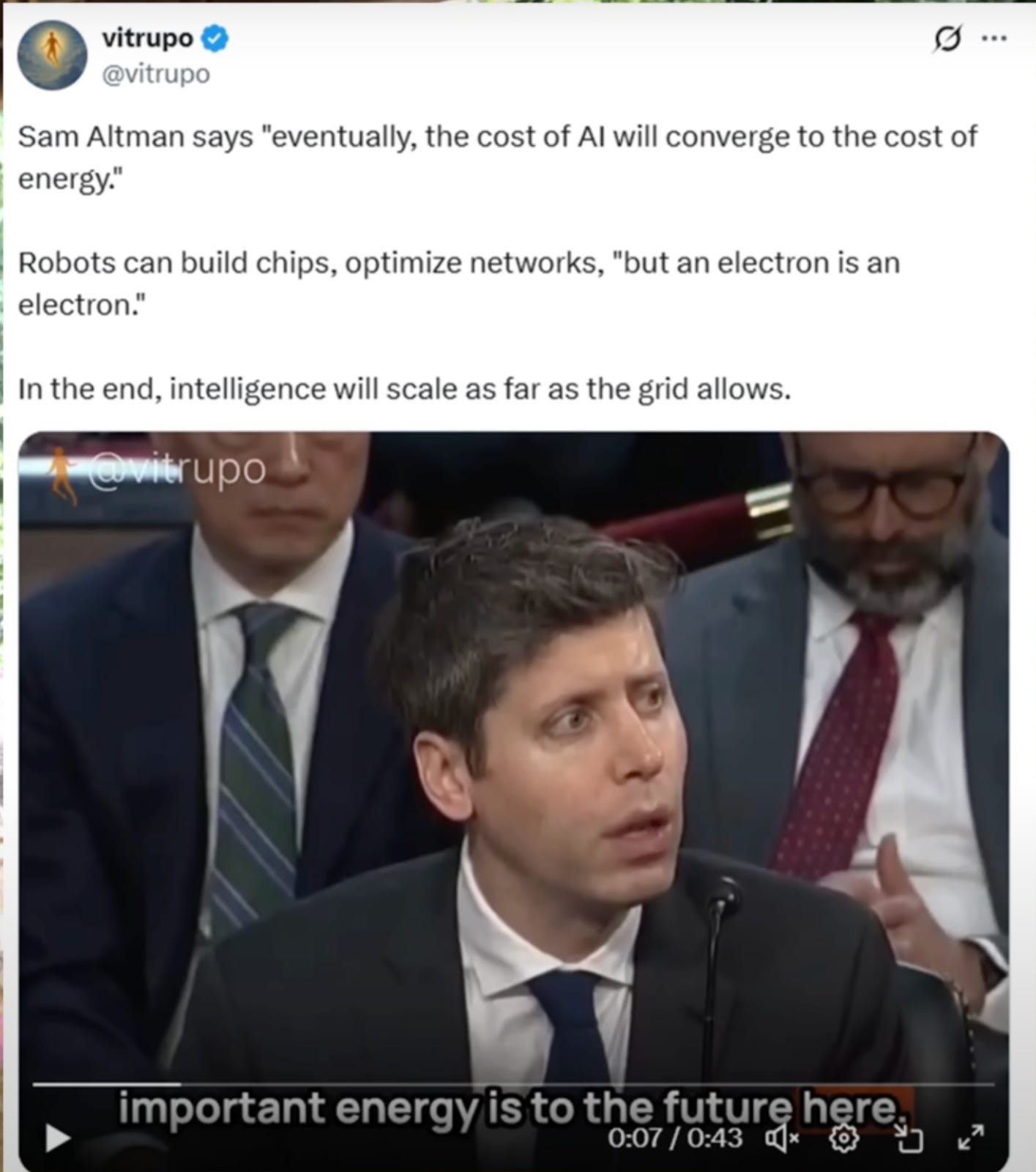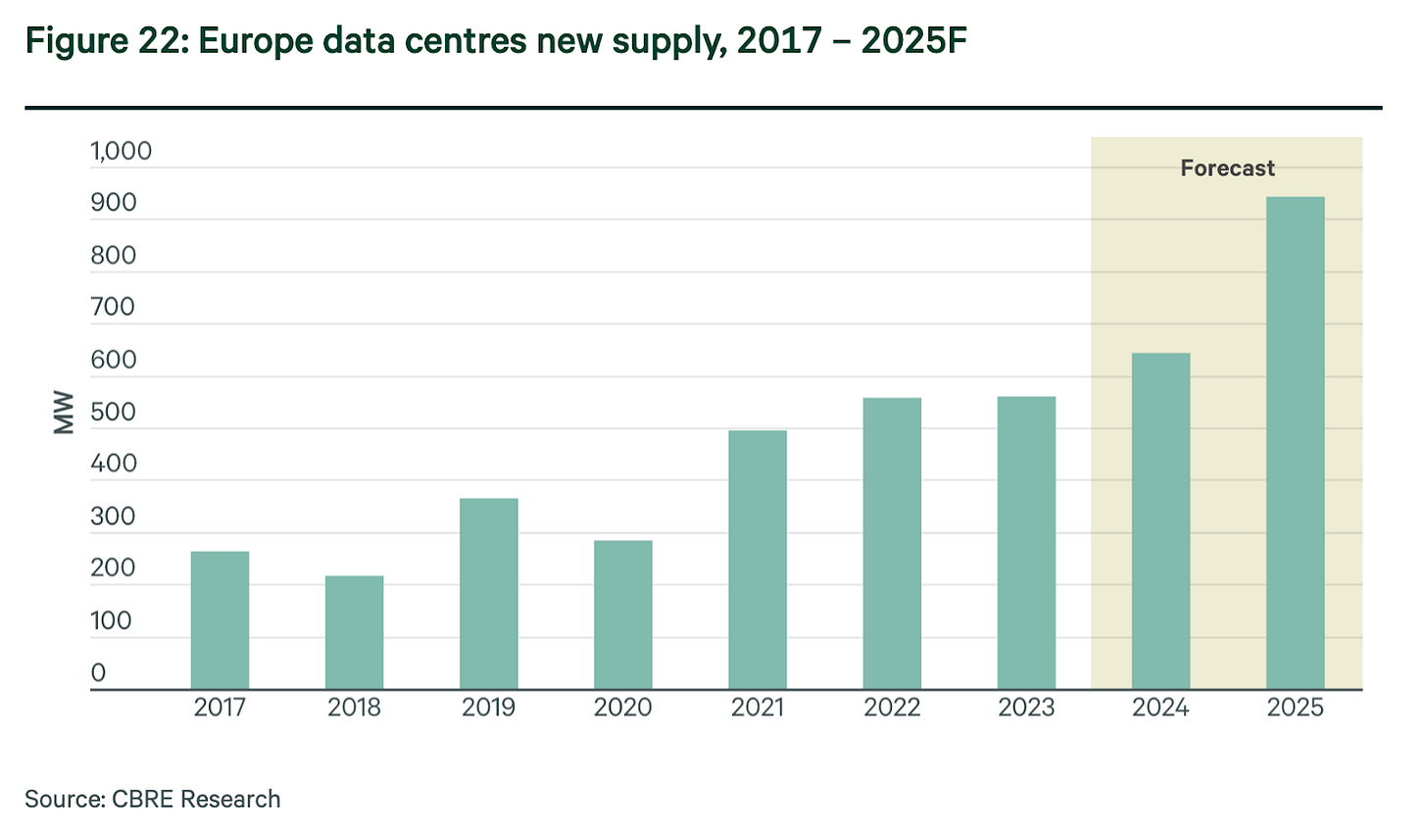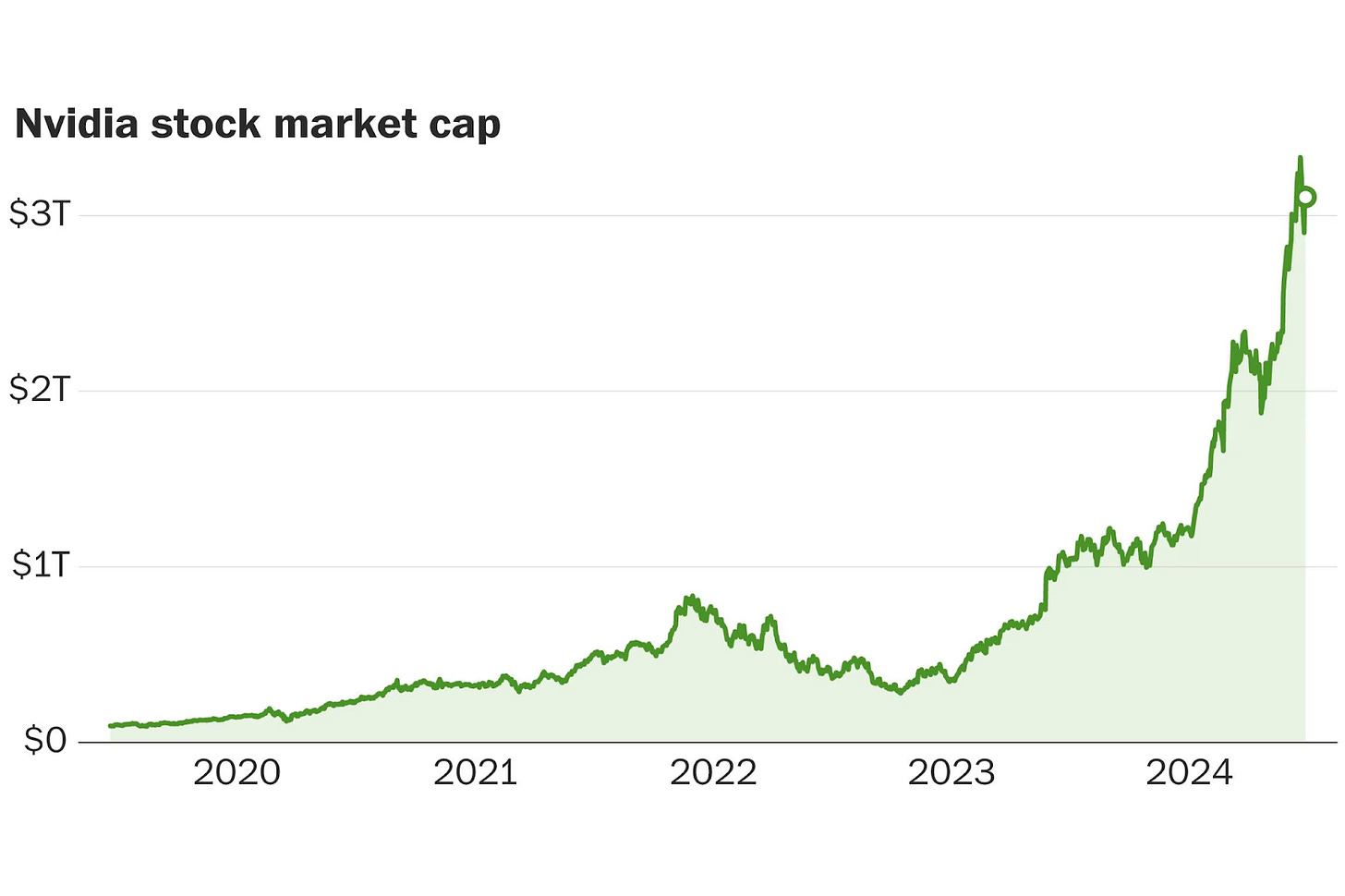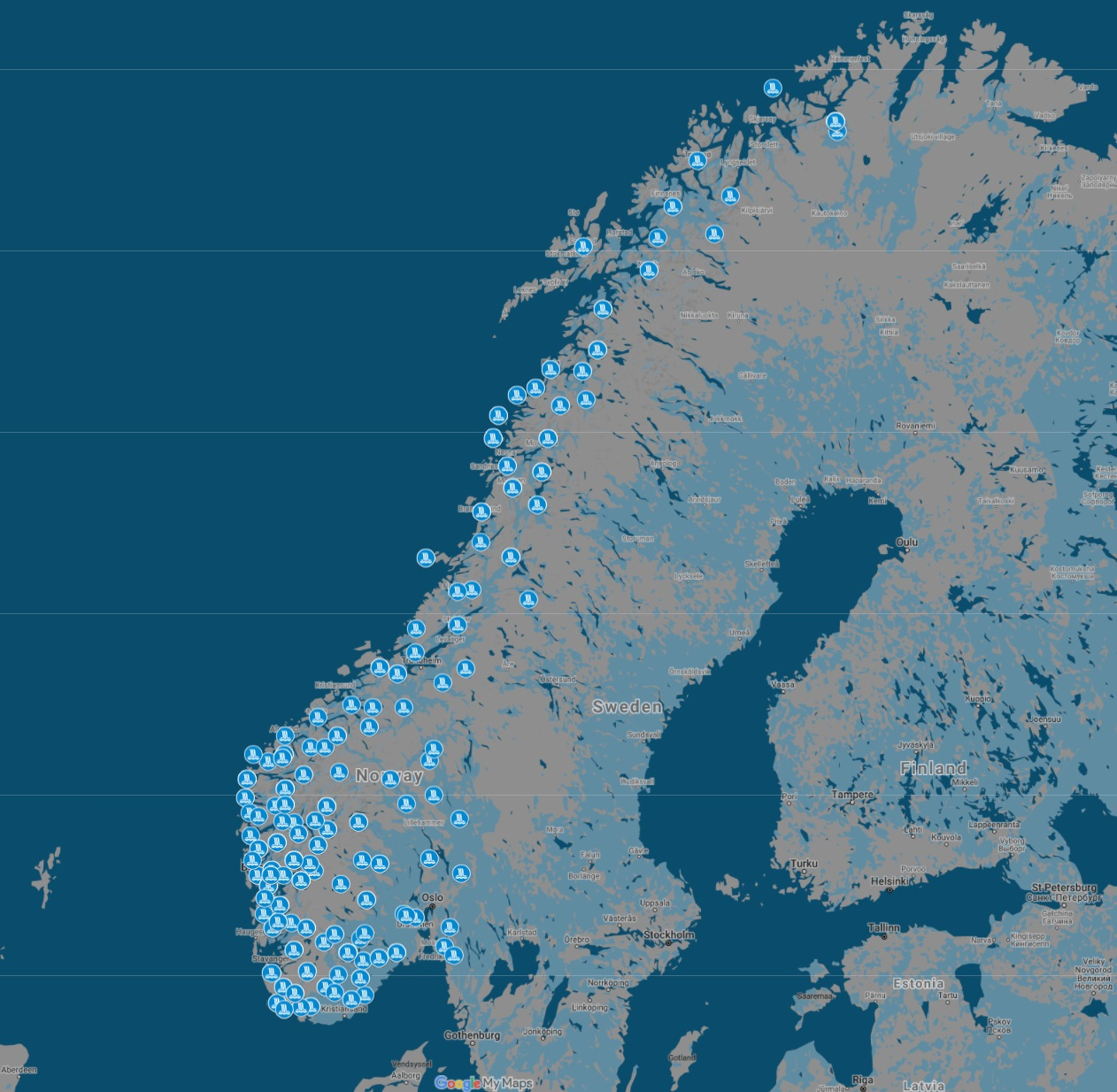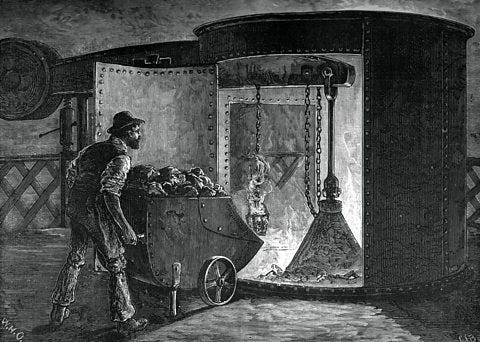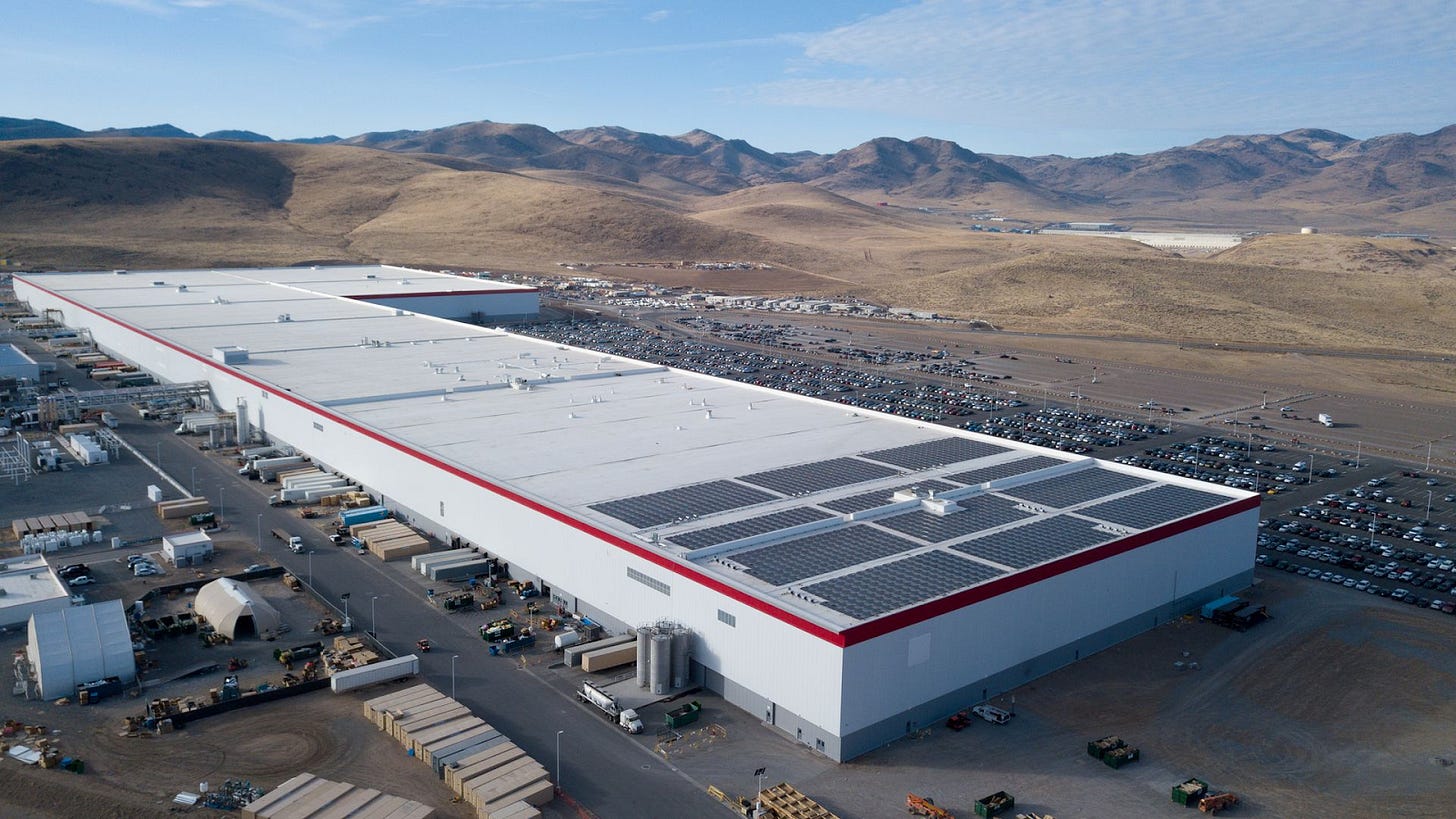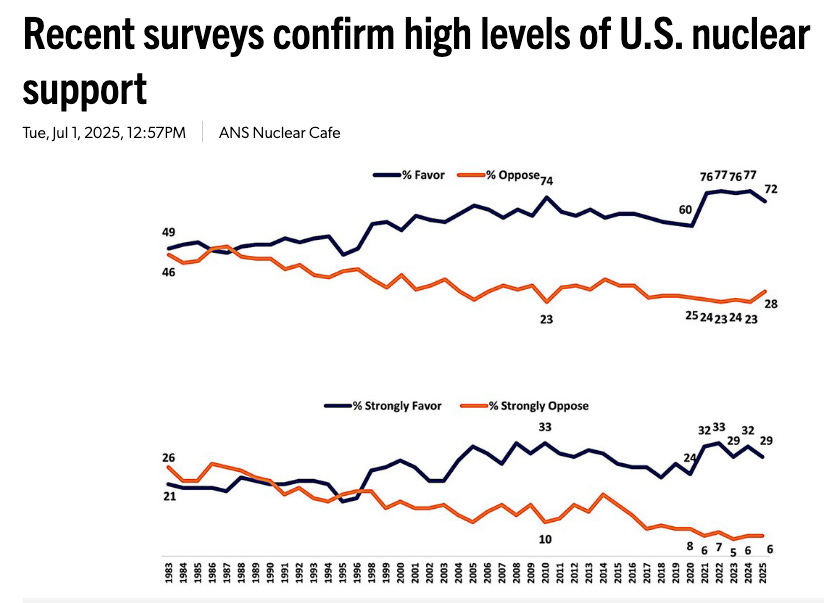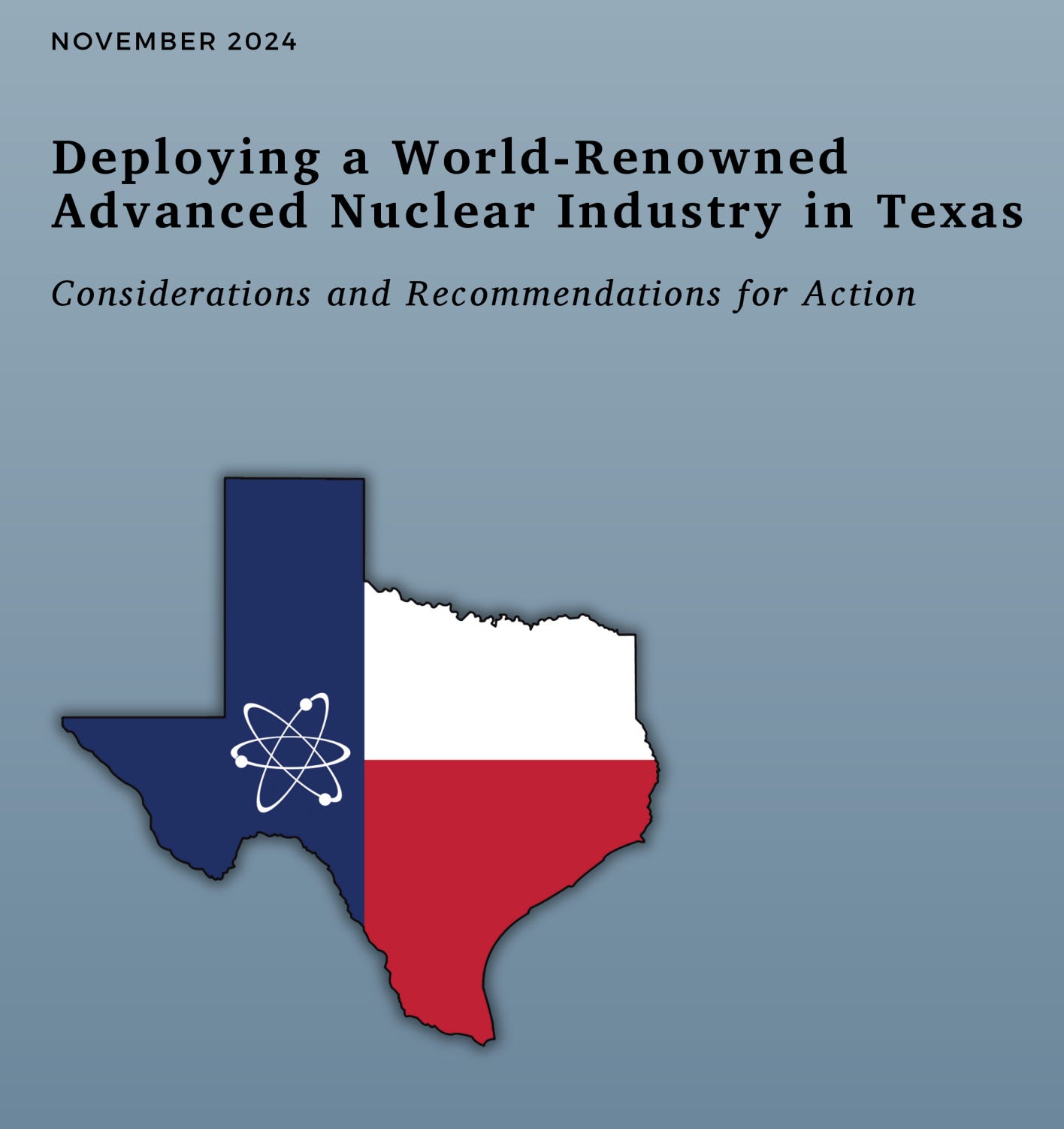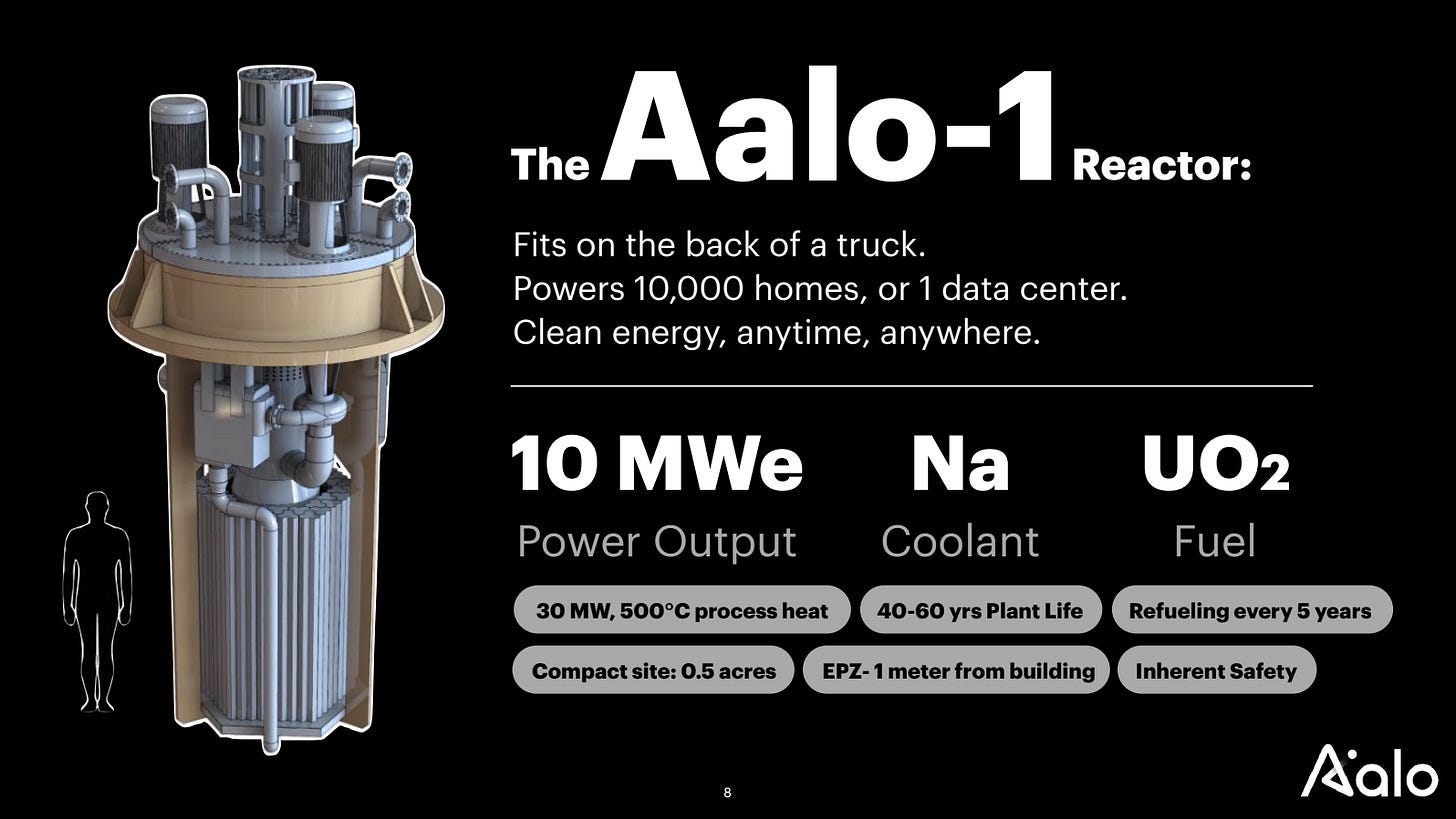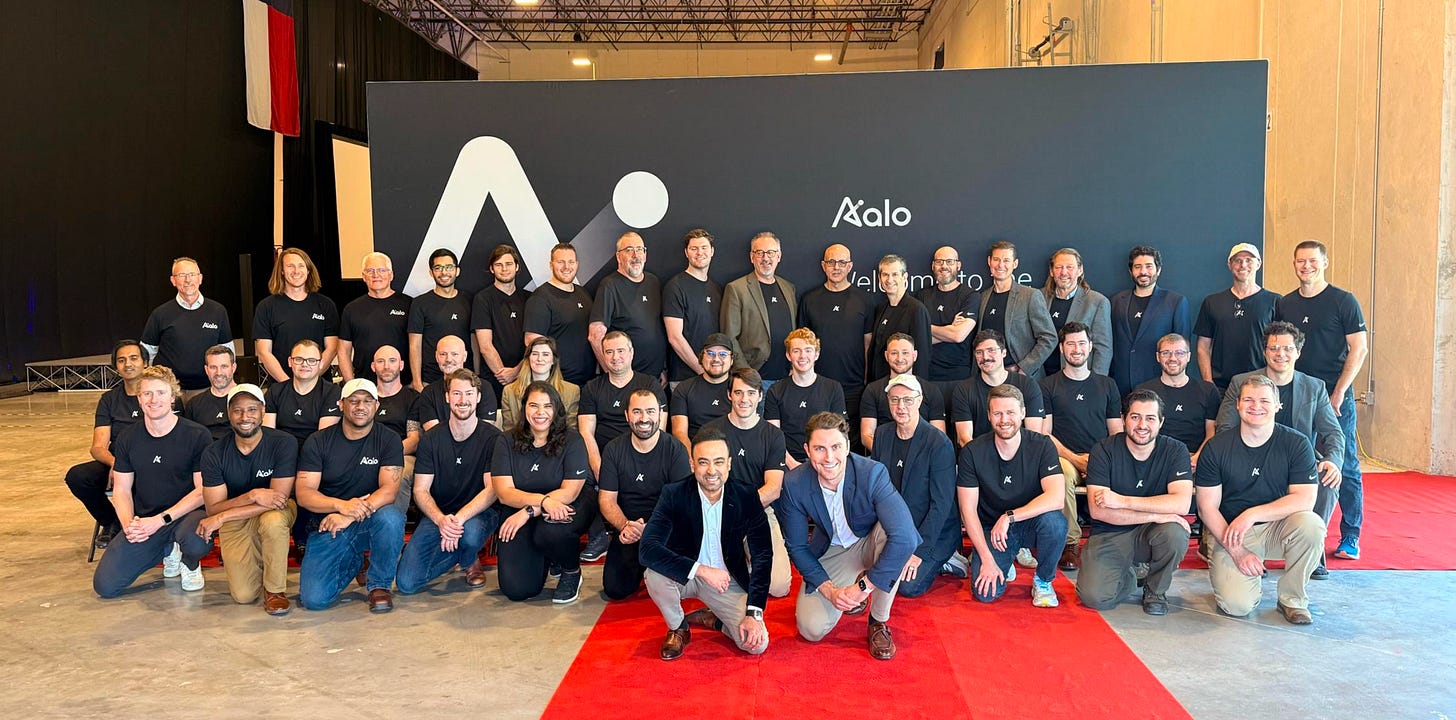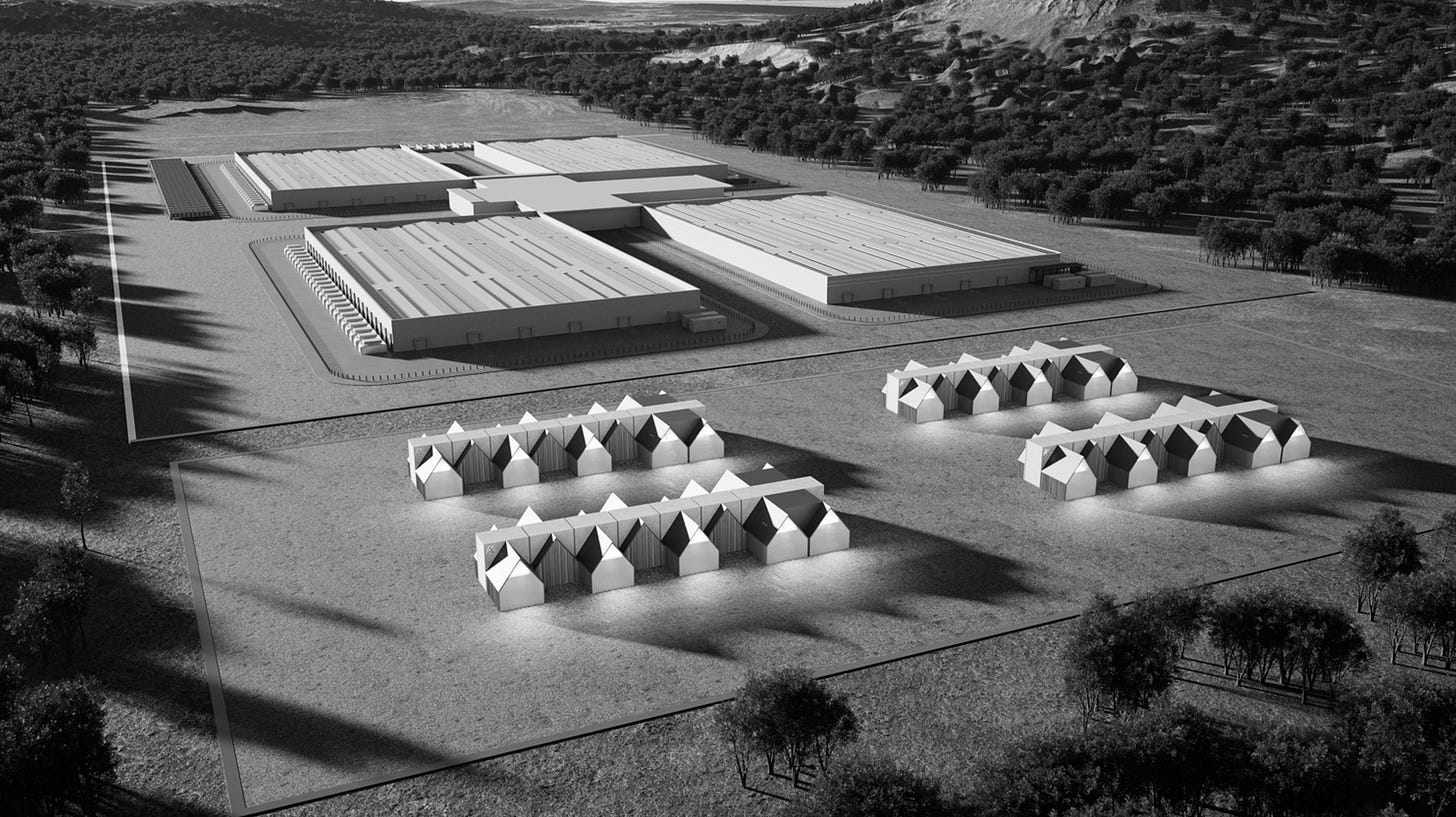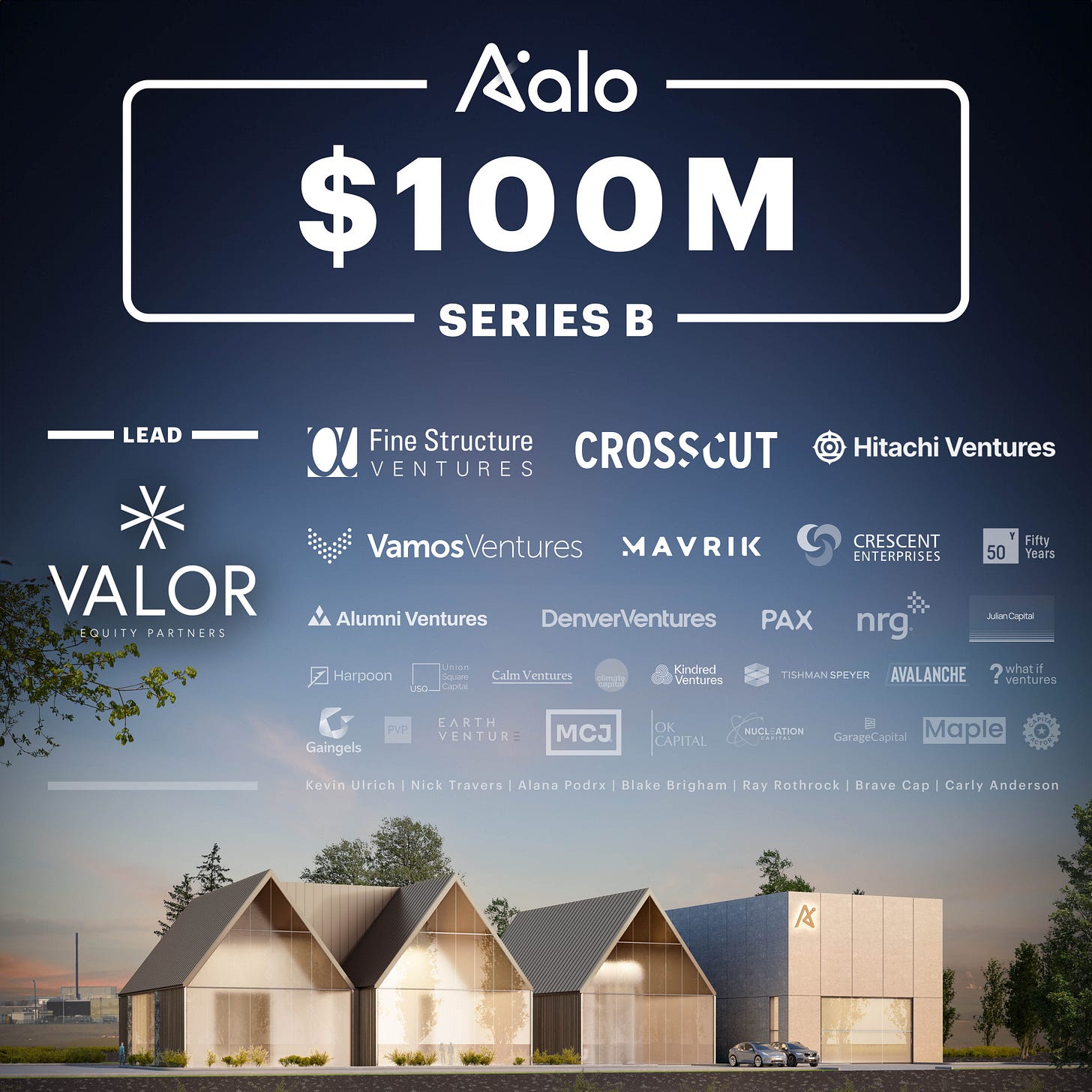The AI Revolution Needs Nuclear Power Now
We are excited to back Austin-based Aalo Atomics
A persistent worldwide power shortage is the most significant impediment to the growth of the global data center market. Power sourcing remains a top priority for operators in all regions. The limited power grid has created opportunities for new technology and alternative power sources like fuel cells or on-site generation systems to help ease the market’s supply shortage.
We will discuss the challenges and demands on the power grid, why nuclear is the obvious solution for the future, and our investment in Aalo Atomics, a fast-moving company making modular nuclear reactors for data centers.
Let’s get into where we are today:
AI is on a Collision Course with the Power Grid
In 2018, Elon Musk resigned from the OpenAI board, picked a public fight with Sam Altman, and then went into direct competition by launching xAI. Musk was an initial founding investor, board member, and promoter, but he became frustrated with Altman and OpenAI wavering from their non-profit R&D roots. By 2023, the tension spilled over into an attempted coup and ouster of Altman, which failed. Now, it’s devolved into a lawsuit and a countersuit, and the most expensive ego battle in world history.
But for xAI to catch up to OpenAI, even with the massive proprietary data sets of Twitter/X and Tesla, Elon needed massive, specialized GPU and NPU data centers to provide the “compute” for model training. And, of course, Elon’s data center needed to be bigger and badder and better than anyone else’s data centers. This is the guy who coined the term “gigafactory.” So, he brokered a deal with the City of Memphis, where the Mayor was happy to have the tech jobs, and Musk planned to buy and install over 1 million GPUs at a staggering cost of $30 billion in NVIDIA chips alone. (Smelling money, NVIDIA has productized this interrelated set of hardware, and you can now shop on their website for an AI Factory.)
But when the xAI team calculated estimates for energy demand, it was clear that just one specialized data center would break the grid for the entire city. So, what to do?
In a rush to build the world’s most powerful data center at any cost and faster than anyone thought possible, xAI did some clever engineering and retrofitted natural gas turbines into trailer-tractor containers and stationed thirty-six of them in what looks to be the parking lot.
This is a clever makeshift solution. And natural gas is the cleanest-burning fossil fuel. But this is not an industrial-grade power plant with industrial-grade pollution controls. Within a month of starting operation, entire neighborhoods in Memphis were complaining of a constant gas smell. Grandmothers with breathing problems were going to the emergency room.
Musk’s practical quick fix for the power generation needed for large-scale creation of AI Models has angered activists and social media influencers. The community has taken to the streets to protest, disrupted city political meetings, and influencers like the famous black cowboy Roland Martin have put out angry social media content. Elon’s break from controversy will have to wait for another media cycle.
Wouldn’t it be nice if there were a clean, quiet way to provide a stable, on-site, off-grid energy source for Specialized AI Data Centers?
The Model Wars are an All-Out Arms Race
If you are not a Machine Learning enthusiast, much of the wild west of AI remains invisible. The story from Memphis is but one dramatic case of technology leaders and politicians scrambling to secure enough “compute” in what could be called “The Model Wars.”
Like everything happening in AI, it is happening bigger and faster and with larger numbers than even the most optimistic predictions. The capital investments found in public announcements in the past year alone exceed $1 trillion.
It was only in 2007, not even twenty years ago, when Amazon launched Amazon Web Services. There were server racks and data centers before Amazon’s launch, but the AWS release was the watershed moment. After that, technology companies launched in “the cloud.”
Cloud Services got all the hype and the attention, but the physical hardware of the Data Center – dystopian rows upon rows of computers and cables – was what made them all work. Sending friends money on a mobile app is cool, but it’s only possible because millions of people are putting boxes on racks and connecting them with wires to the “tubes” that make up the Internet. In 2025, Data Centers are already an estimated $900 billion annual business and estimated to reach $5 trillion by 2034. Blackstone has already invested $100 billion in Data Centers and calls the vertical "its highest conviction investment.”
Getting the AI research engineers the “compute” they need is playing out like a full-on arms race with mind-boggling sums of money and tabloid-style, not-to-be-outdone behavior.
“Big tech companies have spent the last decade amassing huge piles of cash; now they're all spending it in a race to build the gargantuan physical infrastructure necessary to create AI systems that, they believe, will fundamentally change the world. Computational infrastructure of this scale has never been seen before in human history.”
The xAI build in Memphis alone is costing up to $40 billion. Musk calls the facility “Colossus.”
At Google Cloud Next 2025, Google CEO Sundar Pichai confirmed their intent to invest $75 billion this year in AI-specialized data centers.
In January 2025, OpenAI announced “The Stargate Project” with $500 billion in financial commitments from SoftBank, Oracle, Microsoft, and MGX, with technology partners Arm, Microsoft, NVIDIA, and Oracle.
Not to be left out, Jeff Bezos is personally driving similar efforts at Amazon. It also has its project codename – Project Rainier. And it's with OpenAI’s primary challenger, Anthropic. Amazon expects to invest $100 billion in 2025 alone and promises it will be “the world’s largest AI compute cluster.”
Meta, being conspicuously low-key, is investing $29 billion to build a data center in Louisiana. The fact that investment in Louisiana, one of the poorest states in the US, is so small as to suggest a contrarian strategy - which could well be the indicator you need to understand just how intense The Model Wars have become.
If you have been keeping track of numbers and doing napkin math, we are already at $744 billion in urgent capital investments.
Europe Wants In: Money Pouring into European Initiatives
The European High Performance Computing Joint Undertaking (EuroHPC JU) was initiated by the European Union’s Digital Single Market strategy in 2016, began earnestly in 2018, and the bureaucracy was operational by 2020 with a budget of €7 billion. Yet hearing of the Model Wars from America, a not-be-outdone panic set in across Europe. And a tried-and-true European response was needed, i.e., let’s have a summit.
The AI Action Summit was held in Paris from February 6-11, 2025. This was no ordinary summit; this was an action summit. Save some revelry with French food and wine, these people meant business.
At the end, the President of the European Commission announced the InvestAI initiative with a budget of €200 billion, spending €20 billion alone on Data Centers. The initiative brought in 60 private sector partners, called AI Champions, that committed to allocate €150 billion to invest in AI-related infrastructure and activities. Of course, €50 billion was a government subsidy. It’s the EU, after all.
“We are doing this through our European approach – based on openness, cooperation and excellent talent. But our approach still needs to be supercharged. This is why, together with our Member States and with our partners, we will mobilise unprecedented capital through InvestAI for European AI gigafactories.”
- European Commission President Ursula von der Leyen
The resulting fund from the AI Action Summit announced plans to build up to 5 “AI Gigafactories.” A month later, another 6 were announced, bringing the total to 11.
All of these plans are on top of the existing forecasts, for which CBRE claims front and center: “a lack of available power across metro markets will inhibit growth to some degree.”
Given Europe’s more solid commitment to environmental protection and clean energy, we doubt they will repeat the mistakes of xAI in Memphis.
But, where will they get the energy?
The Only Winners of an Arms Race are the People who Sell Weapons.
It’s hard to believe, but 10 years ago, NVIDIA made chips for gamers who wanted to have higher resolutions and screens that produced images at faster speeds. They designed “Graphics Processing Units” and had them manufactured at Taiwan’s TSMC. Early in the Machine Learning age, NVIDIA recognized that GPU architecture offered speed advantages in parallel processing computations over CPUs. They doubled down.
While AMD and Arm are starting to give NVIDIA competition, for a good 8 years NVIDIA’s GPUs were the only suitable chips for which to do “machine learning” at massive scale. Even now, if you want to run a “large parameter” variant of an AI model to perform a basic task, you probably use an NVIDIA chip.
You’ll see the well-known NVIDIA’s stock price chart below. This is what being the only arms dealer in “The Model Wars” can do for return on investment.
Renewable Energy is on a Collision Course with the Power Grid
How Not to Achieve 100% Renewables
It’s nice and sunny in Spain. Solar energy has become widespread through decades of relatively bold policies, Royal Decrees, Feed-in-Tariffs, international agreements, and the extra boost of Spanish competence in large-scale construction projects. Incentives to drive residential adoption have been combined with several large-scale solar projects coming online in recent years.
This can have unintended consequences. On an abnormally sunny day in 2025, the solar power being added back into the grid exceeded the capacity of Red Electrica de Espana’s infrastructure. All grids are designed to handle a relatively stable oscillation; sudden changes can and often do result in equipment shortages, failure, and, in some cases, fires and explosions. Because these failures (or explosions) can cascade to nearby equipment, travel on wires to the next set of transformers, etc., the entire grid, piece by piece and spot by spot, is designed to shut down in the event it might experience a catastrophic influx of power.
On April 28, 2025, a single problem in a sunny spot in Spain caused a seemingly minor issue. Within 4 seconds, it took out the entire physical grid network in most of Spain and Portugal. The result was a near nationwide blackout across the Iberian Peninsula that lasted 23 hours. Of course, this sounds short. But consider a day of your life and the world around you. Within that time in Spain, a military emergency was declared, factories and logistics networks came to a halt, and restaurants, bars, and grocery stores had to throw out their refrigerated and frozen items. Insurance claims are now backed up for months.
The stabilizing technology that usually handles excess energy is still located in the old fossil fuel power plants. Solar doesn’t pass through them. The technology that could help is called “synthetic inertia,” and it has yet to be adopted at any meaningful scale in Europe. Massive-scale battery capacity capable of rapidly absorbing excess electrons is not widespread and is produced only in China (for now).
100% renewable should be the goal, right? Right. Well, Norway has been 100% renewable for decades. The country isn’t experiencing blackouts. Why? Because Norway isn’t sunny, it’s rainy.
Rivers with Hydroelectric Dams in Norway
Hydroelectric dams come with the helpful feature that they are relatively predictable and can be turned up or down. Excess water pressure can just be released through a spillway. Easy. But wind and now specifically solar can be massively productive but are also necessarily volatile. There’s not really a built-in “release” feature like a spillway in a dam.
Sunshine in Spain
The blackouts in Spain and Portugal are estimated to have cost $2.5 billion according to analysts at the Royal Bank of Canada.
So, if not renewables, then what energy?
Advanced Heavy Industry is on a Collision Course with the Power Grid
On-site power sources are the historical norm. What we now think of as the energy industry has its origins in the Industrial Revolution, particularly in the emerging steel industry. Any facility that dealt with metals had to secure its own source of heat – usually impoverished men shoveling coal into a furnace. Any facility that had the precursors to modern machines had to be located on a source of moving water – powered by the same mill wheels used for a millennia.
The hundred years of worldwide tinkering with magnets and wires that James Clerk Maxwell and Michael Faraday kicked off in the 1830s were funded primarily by industrialists scrambling to power their increasingly mechanized manufacturing facilities. The result would be marquee companies (and investments) like Westinghouse, General Electric, and Siemens.
Similarly, we are seeing an avalanche in heavy industry.
First, rapid adoption of advanced robotics, and second, the co-location of every process and team you could possibly fit under one roof. Compared to their 150-year-old counterparts in the English Midlands, the Rhineland, or the river networks of the American Great Lakes, organizations building gigafactories are in a more desperate scramble for more and stable power sources.
Tesla’s Gigafactories consume nearly 100 megawatts per day, the equivalent of 80,000 homes. Estimates of the annual bill for the Nevada Gigafactory is about $95,000,000.
Factories and facilities like this will either need to secure their own source of energy or will increasingly choose to do so if the power grid becomes unstable.
An independent analyst did the math on what it would cost to operate the Nevada Gigafactory in Germany based on energy prices. The estimate was $1 billion annually. Just in energy costs.
How Not to Geolocate a Gigafactory Site
In the last forty years, developing nations have had an advantage in manufacturing at scale. Their populations were largely rural, and as agricultural productivity increased, young people were willing to move into dormitories that sat alongside large-scale factories. Currency arbitrage allowed manufacturers to hire more people without needing to invest in industrial tooling, engineers, or the automation of processes.
Buying low-cost goods at Walmart is great until society realizes that no one knows how to make anything anymore and all the beloved companies and brands are dependent on sourcing labor from places with increasingly authoritarian, unstable regimes. And this shift in mindset comes into further focus when a fifth of the population struggles to find work. China’s manufacturing dominance has become so profound that elections and policy shifts in the developed world keep focusing on a desperate desire to restore “good jobs” in “real industries” that make “real things.”
The hypothesized answer to creating stuff at home again is the gigafactory – a highly roboticized, massive-scale factory. To achieve the productivity boosts typical of knowledge work on corporate campuses, gigafactories aim to consolidate more processes and people into a single site than previously thought possible. Genius. What could go wrong?
Aiming to open their first gigafactory in Europe, Tesla found one of the only ideal sites in East Berlin – primarily a bunch of woodlands, the nearest spot on the map being the town of Grünheide.
And then Europe got in the way. Grünheide’s surrounding forests included protected, old-growth forests, some of the last remaining on the European continent. (Elon’s PR teams have real job security.)
Waiting until protestors need to go back to school and work is a cost of doing business for most large multinational corporations in heavy industry. Yet, these German protestors had peculiar stamina and inventive tactics. Many of them built treehouses and moved into the trees for months and months, delaying construction at a massive expense to Tesla. The police had to train up on, if not entirely invent, treehouse crowd control.
What can be surprisingly expensive? When activists are so committed, they will live in trees for months and realize that a gigafactory’s single point of failure is their connection to the power grid.
Despite all the drama and impossibly expensive setbacks, and energy costing 10 times the first gigafactory in Nevada, the German area is experiencing an “economic miracle.” So, of course, now the world wants more gigafactories in more industries. In the effort for European industrial companies keep pace, Ford & LG are partnering with Koc Holdings to build an EV battery gigafactory in Turkey. In France, Japanese company Automotive Energy Supply Corporation (AESC) is building its first European gigafactory. Volkswagen has six gigafactories planned to open by 2030, three of them in Europe. Soon, we will have gigafactories for everything, and they will be everywhere.
The only reliable and cost-effective way to do this kind of industrial build will be for these gigafactories to secure their own stable, clean, on-site source of energy.
But where will they get the energy? The Obvious Future For Modular Nuclear.
Nuclear traditionally has been out of reach as it’s expensive, slow, and politically unpopular for being seen as unsafe. That has now changed.
First, there is now higher support among the general public for nuclear energy. It is seen as one of the most reliable forms of renewable energy.
Second, the current US Federal Government and the Texas state government are all-in on nuclear.
President Donald Trump has been actively promoting nuclear energy as part of his administration's strategy to enhance U.S. energy independence and security. He issued four executive orders in May to show his support, and his initiatives include the Nuclear Reactor Pilot Program aimed at advancing nuclear technology and getting test reactors ready by July 2026. Yes, that is 11 months from now.
Move over, Silicon Valley: The Arms Race Headquarters is in Austin, Texas
A few data points:
OpenAI / Project Stargate’s gigafactory is being built out in Abilene, TX.
Amazon’s Project Rainier is building out their facilities in “an unassuming lab” in Austin, TX.
Musk has moved the primary operations of all of his companies to Austin, TX. The “Giga Texas” plan now churns out 126,050 battery cells per day.
Gigafund, a massive spin-out of FoundersFund, Peter Thiel’s primary Venture Capital fund to back egregiously large infrastructure investments, is based in Austin, TX.
Aalo is headquartered in Austin, TX.
And, yes, Avalanche is also headquartered in Austin, TX.
Texas is the energy capital of the world. Houston and Dallas are to the energy industry what New York City is to the Finance industry. Republican Governor Greg Abbot has been active in assuring that Texas retains this role by tossing out red tape and regulations and setting up the Texas Advanced Nuclear Reactor Working Group. Of particular interest was promoting Texas as a hotbed for Small Module Reactor (SMR) technology.
The Texas Working Group has already established: 1) the position of Texas Nuclear Permitting Officer as a single point of contact for developers, 2) a Texas Advanced Manufacturing Institute to develop and foster a nuclear network, and 3) a direct grant cost-sharing—a nuclear energy and supply chain fund—to incentivize early development and siting.
Who Is Selling the Best Weapons: Enter Aalo
Aalo is born out of the Idaho National Lab, one of only a few advanced nuclear research labs in the United States, and early team members from Bloom Energy, an innovator of onsite power. Additional highlights about the team include:
the Former head of the MARVEL at Idaho National Lab, founder of Westinghouse eVinci program,
the Former Senior Director and CSO of energy at Microsoft. Google & Amazon,
the Former VP for Government Programs at GE, Hitachi, Zeno Power, as well as many years at the Department of Energy,
the Former Director of Manufacturing for SpaceX’s Falcon 9 rocket, and,
the Cofounder, CEO, is a second time CEO who exited his first company for $150M USD.
Aalo is tailoring their product design into mobile, portable “pods” perfect for Data Centers. While facilities often have solar panels, they do not occupy enough land to generate enough solar or wind energy to power themselves. In addition, they need predictable, constant energy. The variable nature of other renewable energy sources is a non-starter. Aalo’s flagship Aalo Pod is a 50-MWe extra modular reactor (XMR) that is purpose-built to provide fast, reliable, clean, safe, and scalable on-site power for modern data centers. Each Aalo Pod comprises five Aalo-1 reactors, which are fully modular to enable scalable deployment, from single 10 MW units to gigawatt-scale facilities. This is perfect for the hurried nature of the demanding, urgent Data Center customer base.
“I needed it yesterday, can you have it here tomorrow?”
“What’s your budget?”
“$500 Billion Dollars.”
The Most Credible Enabling Network in Nuclear
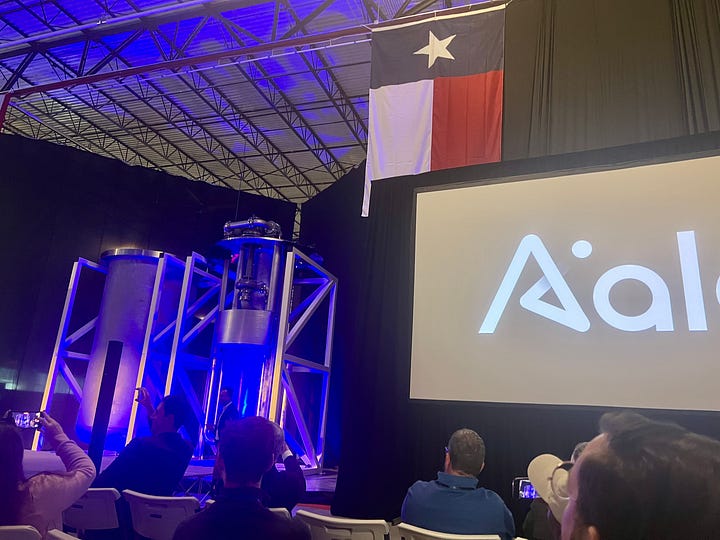

Both of us (Michael from Hypernova and Katelyn from Avalanche) have spent time at the Aalo facilities in Austin. This latest $100M Series B is led by Valor Equity Partners, and particularly by Antonio Gracias, founder and CEO, who has been a long-term capital partner of Elon Musk’s enterprises and knows intimately the various factors creating a collision course with the power grid. The rest of our co-investors are a broad coalition that recognizes this as obviously the future.
We are excited by the potential for this future and invite you to join us!





